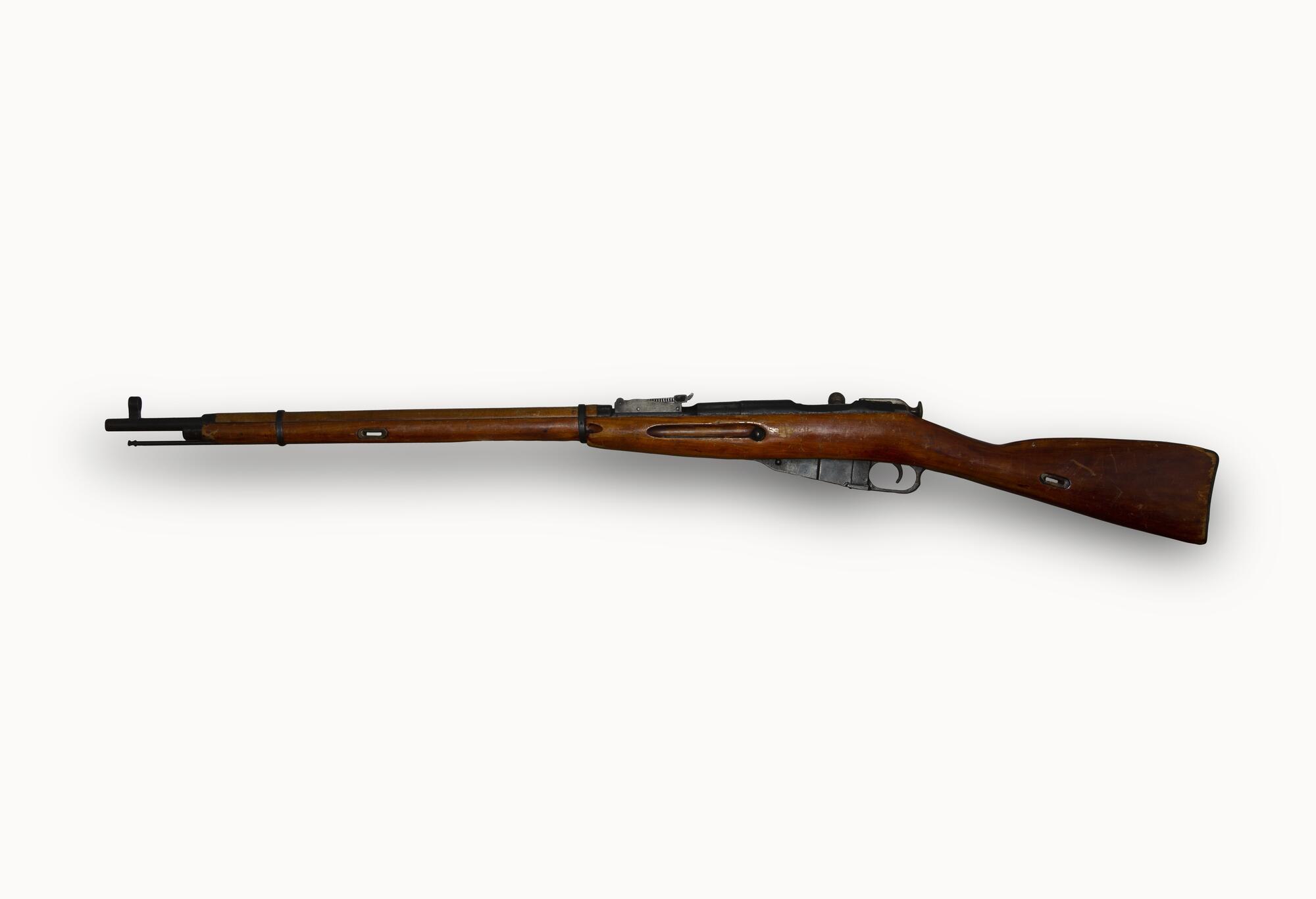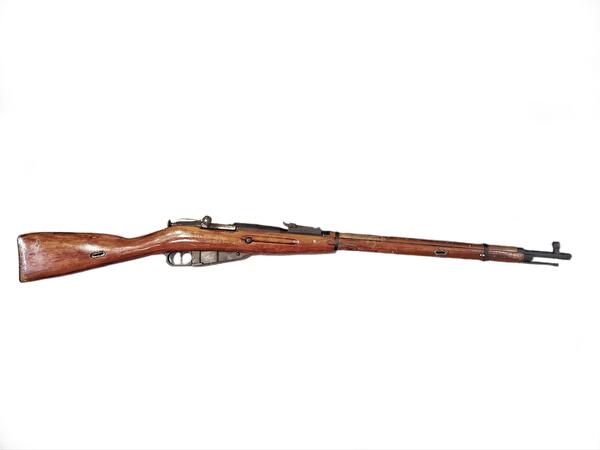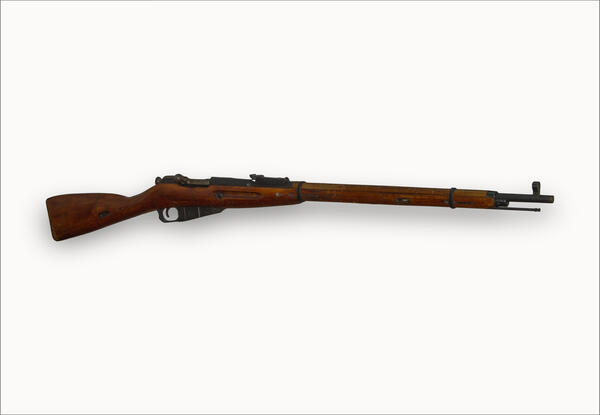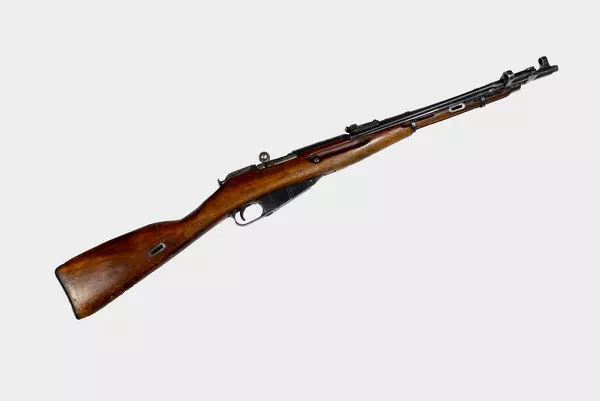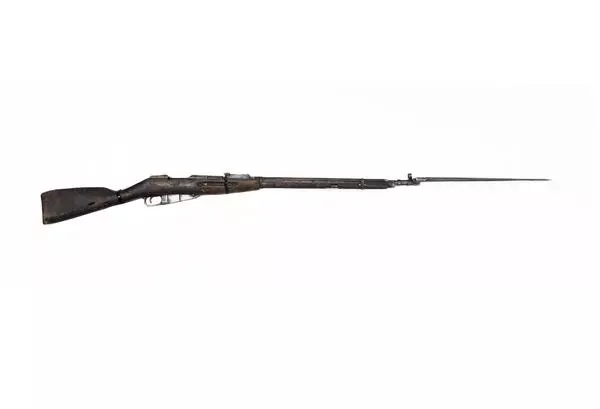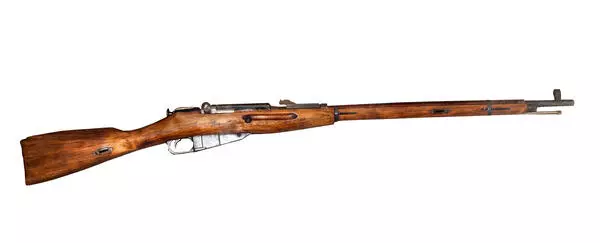The famous semi-automatic rifle was designed by Sergei Ivanovich Mosin in 1891. It used 7.62 mm cartridges. This is why the rifle was also known as a three-line rifle: its caliber was equal to three lines, a line being an obsolete unit of measurement equal to one-tenth of an inch, or 2.54 millimeters.
Mosin’s rifle of the 1891 model was adopted in three versions: the first one had a long bayonet and barrel and was intended for infantry soldiers, the second one was intended for cavalry, or Dragoon units, had a shorter barrel, and used a new method of attaching the belt, while the third one was the Cossack version with the shortest barrel and without a bayonet. In the 1920s, the Dragoon version was chosen for a new modified rifle.
The 1891/1930 model was designed as a result of this modification. Despite the upgraded design, the rifle soon became outdated. However, it was widely used in battles during the most difficult and decisive months at the beginning of the Great Patriotic War. Being inexpensive and reliable, this tested weapon was more popular than newer semi-automatic rifles.
The rifle was actively used before that — during the Russo-Japanese War, World War I, and the Russian Civil War. However, it was during the Great Patriotic War that the “three-line rifle” became the most popular type of small arms in the Soviet Union. Between May 1941 and the end of 1944, the Soviet industry produced over 11 million rifles and carbines based on Mosin’s rifle.
The rifle had a bolt action that used a rotating bolt design. The sighting device consisted of a front sight and a backsight leaf. The rifle used a 7.62×54 mm cartridge.
The magazine could either be loaded by inserting cartridges individually, or by the use of 5-round stripper clips. The rifle had a firing range between 400 meters (effective range) and 2,000 meters (aiming range).
Mosin’s rifle was simple, reliable in use, low-cost, and easy to produce. It became the basis of several modifications, including a sniper rifle. It was also used by the Red Army during the Great Patriotic War. The rifle was produced until 1945. Later, a large number of such rifles were exported to third-world countries.
Mosin’s rifle of the 1891 model was adopted in three versions: the first one had a long bayonet and barrel and was intended for infantry soldiers, the second one was intended for cavalry, or Dragoon units, had a shorter barrel, and used a new method of attaching the belt, while the third one was the Cossack version with the shortest barrel and without a bayonet. In the 1920s, the Dragoon version was chosen for a new modified rifle.
The 1891/1930 model was designed as a result of this modification. Despite the upgraded design, the rifle soon became outdated. However, it was widely used in battles during the most difficult and decisive months at the beginning of the Great Patriotic War. Being inexpensive and reliable, this tested weapon was more popular than newer semi-automatic rifles.
The rifle was actively used before that — during the Russo-Japanese War, World War I, and the Russian Civil War. However, it was during the Great Patriotic War that the “three-line rifle” became the most popular type of small arms in the Soviet Union. Between May 1941 and the end of 1944, the Soviet industry produced over 11 million rifles and carbines based on Mosin’s rifle.
The rifle had a bolt action that used a rotating bolt design. The sighting device consisted of a front sight and a backsight leaf. The rifle used a 7.62×54 mm cartridge.
The magazine could either be loaded by inserting cartridges individually, or by the use of 5-round stripper clips. The rifle had a firing range between 400 meters (effective range) and 2,000 meters (aiming range).
Mosin’s rifle was simple, reliable in use, low-cost, and easy to produce. It became the basis of several modifications, including a sniper rifle. It was also used by the Red Army during the Great Patriotic War. The rifle was produced until 1945. Later, a large number of such rifles were exported to third-world countries.
